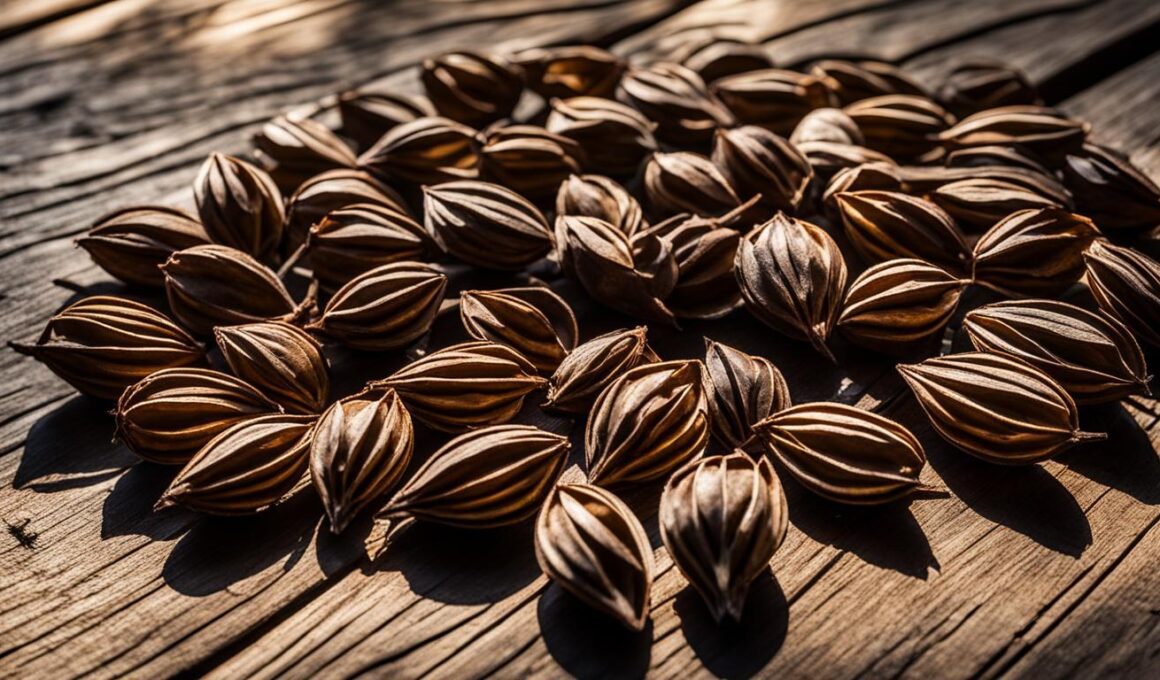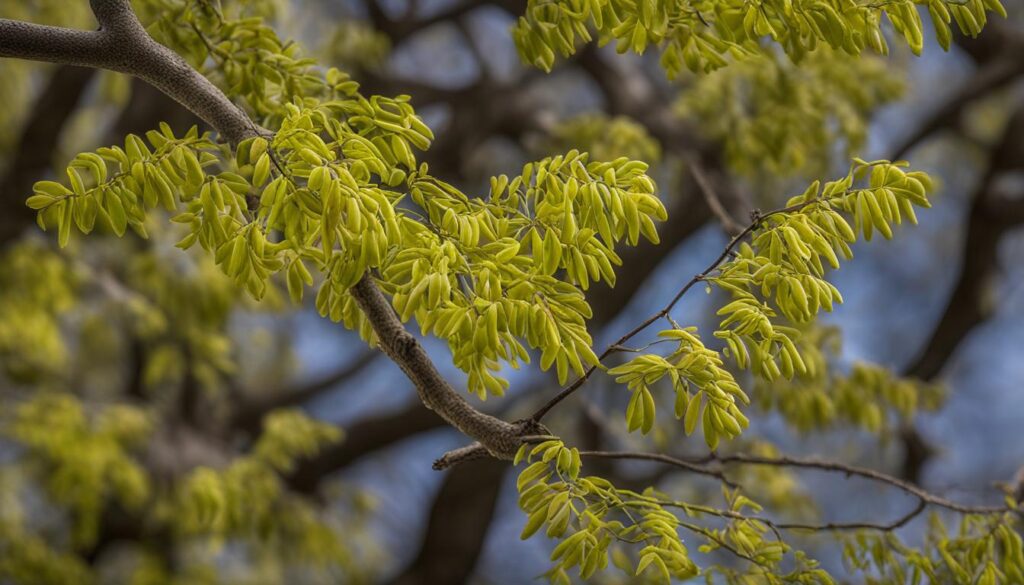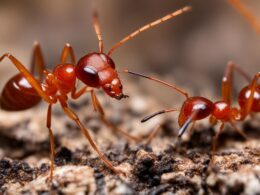Welcome to our guide on locust tree seed pods! Whether you are a gardening enthusiast or simply appreciate the beauty of nature, understanding the care, benefits, and tips for these unique seed pods can enhance your gardening experience. Locust tree seed pods, also known as Honey Locust seed pods, offer both visual interest and ecological advantages to your garden or landscape.
Identification and Characteristics of Honey Locust
Honey Locust trees have a distinct appearance, with clusters or isolated thorns on their trunks and branches. These thorns can measure up to 8 inches long and ¼ inch in diameter at the base. The leaves of Honey Locust trees are compound and bipinnate, with 5-11 pairs of small leaflets.
The bark is light gray to black and arranged in irregular large flat plates separated by shallow furrows. The tree produces greenish-yellow flowers in late spring, which develop into flat, red-brown seed pods that range from 4 to 17 inches long. The root system consists of a taproot and deep, wide-spreading branches.
Honey Locust Tree Care and Maintenance
Proper care and maintenance play a crucial role in the healthy growth and longevity of Honey Locust trees. By following a few essential steps, you can ensure that your tree thrives and remains a stunning addition to your landscape.
1. Sunlight and Soil Requirements
Honey Locust trees prefer full sun to partial shade for optimal growth. Ensure that your tree receives at least six hours of direct sunlight each day. Additionally, the tree thrives in well-drained soil with a pH range of 6.0 to 8.0. Regularly test the soil and amend it if necessary to maintain the ideal pH level.
2. Watering
During the establishment period, it is crucial to provide regular watering to young Honey Locust trees. Keep the soil consistently moist but not waterlogged. As the tree matures, it becomes moderately resistant to drought. However, during prolonged dry periods, consider supplementing natural rainfall with deep irrigation to ensure the tree’s health.
3. Pruning
Pruning is an essential aspect of maintaining the shape and overall health of Honey Locust trees. Perform pruning during late winter or early spring when the tree is dormant. Remove any dead, diseased, or damaged branches, as well as any crossing or rubbing branches. Pruning also helps improve air circulation and reduces the risk of pest and disease infestations.
4. Fertilization
Honey Locust trees are relatively low-maintenance when it comes to fertilization. In most cases, they do not require excessive feeding. However, adding a slow-release organic fertilizer in early spring can provide a nutrient boost to support healthy growth. Follow the manufacturer’s instructions regarding application rates and frequency.
5. Pests and Diseases
Regular monitoring for pests and diseases is crucial for maintaining the health of Honey Locust trees. Common pests include spider mites, cankerworms, and leafhoppers. Look out for signs of damage such as chewed leaves or abnormal discoloration. If you suspect an infestation or disease, consult with a professional arborist to identify the problem and determine the best course of action.
By following these care and maintenance practices, you can ensure the long-term health and beauty of your Honey Locust tree. With its resilience, adaptability, and attractive features, the Honey Locust tree is a valuable addition to any garden or landscape.
Conclusion
Honey Locust trees offer numerous advantages for landscaping and gardening. With their open crown and unique seed pods, they add a stately beauty and visual interest to any landscape. The small leaflets of the tree allow grass to thrive underneath, making it a suitable choice for lawns.
While it’s important to note that Honey Locust trees have thorns, which can be a downside for some, there are thornless varieties available for those who want to enjoy the benefits without the risk. These thornless options provide all the advantages of Honey Locust trees without the concern of thorn injuries.
Overall, Honey Locust trees are resilient and adaptable, making them a valuable addition to any garden or landscape. They not only enhance the aesthetic appeal but also provide food and shelter for wildlife, further contributing to the ecological balance of the surroundings. Consider planting a Honey Locust tree to enjoy its many benefits and create a vibrant and diverse outdoor space.
How Do Locust Tree Seed Pods Compare to Chinese Pistache Trees?
Locust tree seed pods are significantly larger and more prominent than the small, inconspicuous pods of Chinese Pistache trees. The”pros and cons of Chinese Pistache” depend on factors like size and appearance, making the locust tree seed pods a more noticeable and potentially better choice for landscaping.










